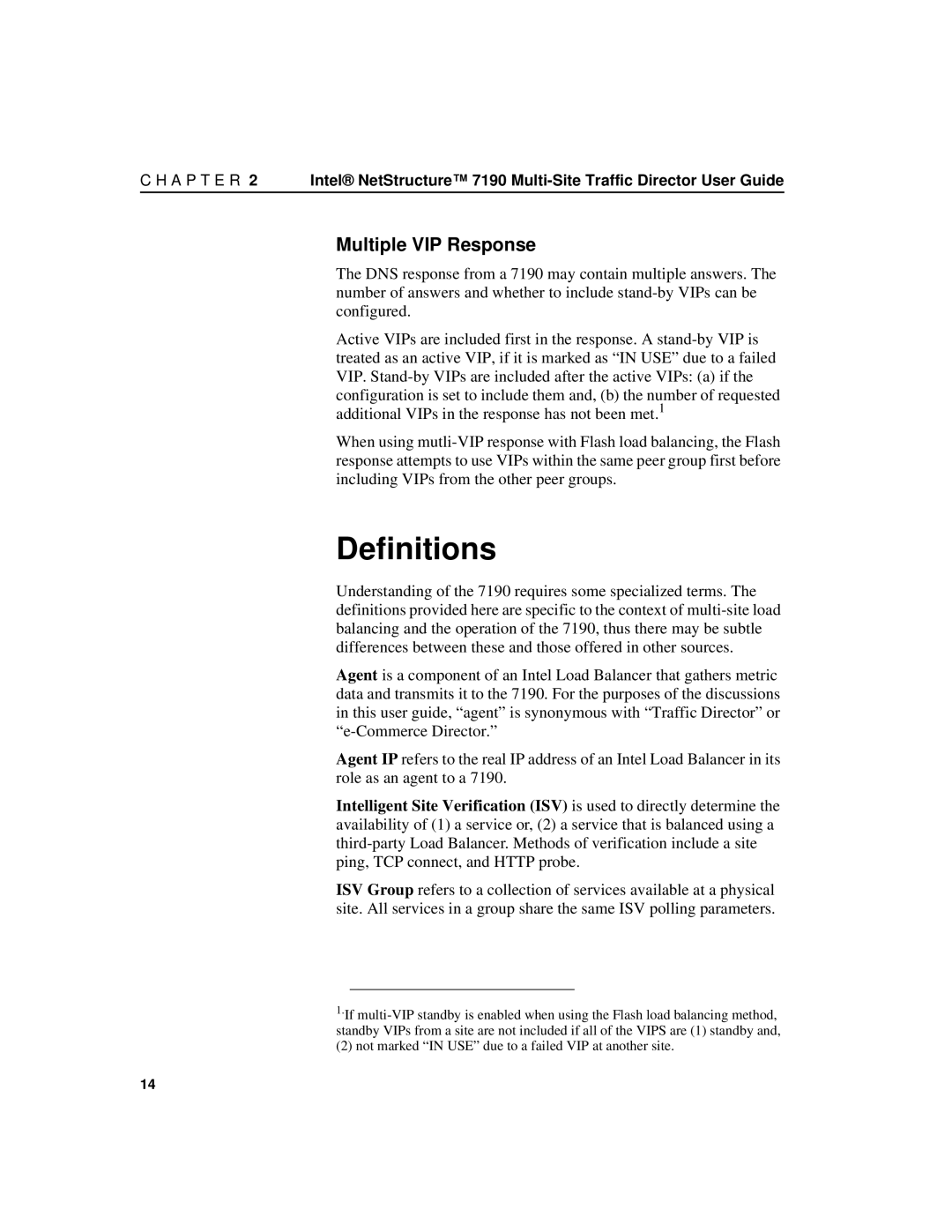C H A P T E R 2 | Intel® NetStructure™ 7190 |
Multiple VIP Response
The DNS response from a 7190 may contain multiple answers. The number of answers and whether to include
Active VIPs are included first in the response. A
When using
Definitions
Understanding of the 7190 requires some specialized terms. The definitions provided here are specific to the context of
Agent is a component of an Intel Load Balancer that gathers metric data and transmits it to the 7190. For the purposes of the discussions in this user guide, “agent” is synonymous with “Traffic Director” or
Agent IP refers to the real IP address of an Intel Load Balancer in its role as an agent to a 7190.
Intelligent Site Verification (ISV) is used to directly determine the availability of (1) a service or, (2) a service that is balanced using a
ISV Group refers to a collection of services available at a physical site. All services in a group share the same ISV polling parameters.
1.If
(2) not marked “IN USE” due to a failed VIP at another site.
14
